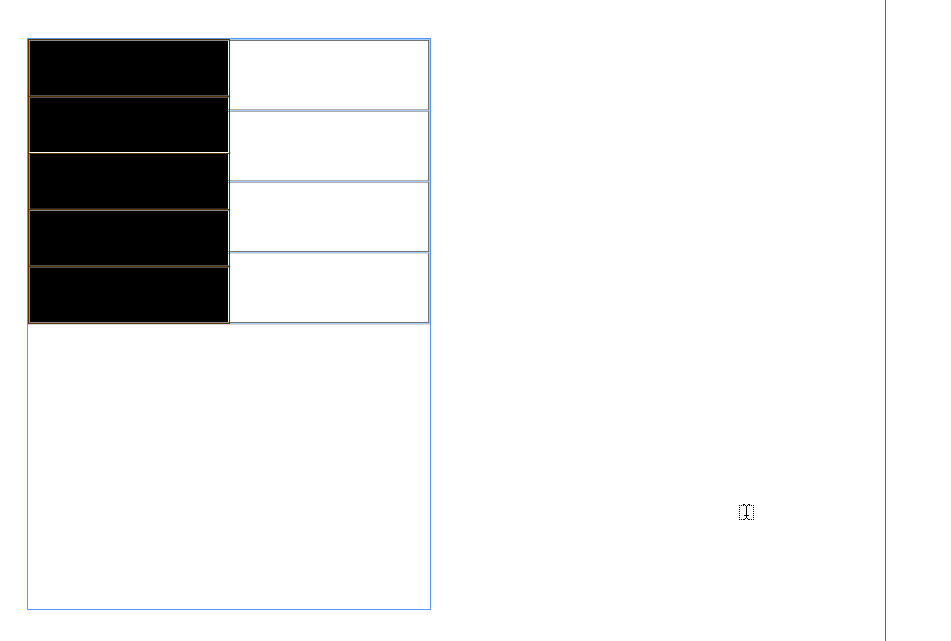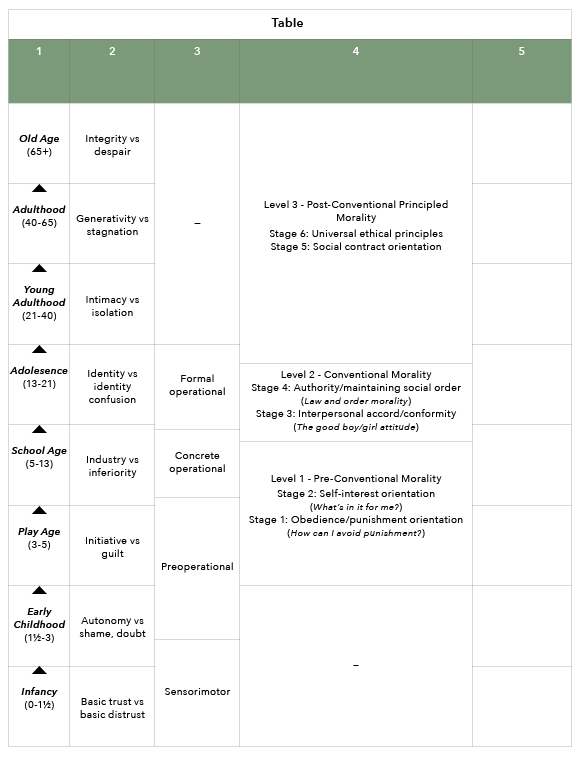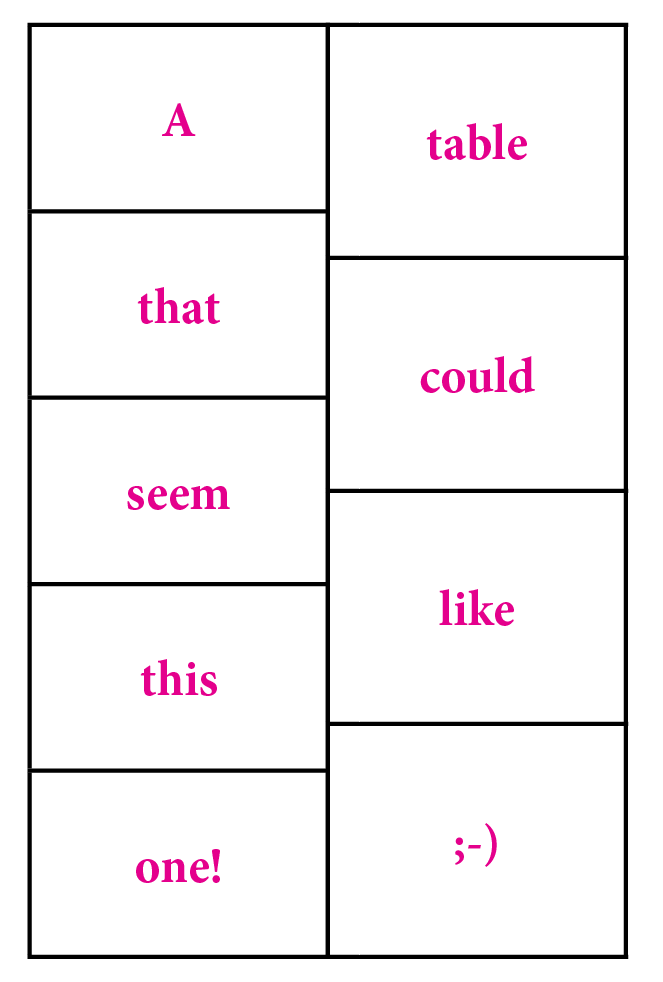Copy link to clipboard
Copied
I need to create a table with 2 columns. I need 5 cells in the 1st column and 4 cells in the 2nd column, and the top and bottom of each column needs to be the same height. How do I do this?
Thanks in advance.
Michael
 1 Correct answer
1 Correct answer
Merging and splitting tables can be so fun... or not ![]()

So.... Do not try to distribute rows evenly... You will get unexpected results.
Now, here comes the headache situation:

You're going to have hard time figuring out how to get back even cells heights...
I couldn't...
Now, if, as Michel suggested, you only work with fixed height*, you should be OK:

Have fun ![]()
Copy link to clipboard
Copied
It would be easier to answer if you could draw out what you want the table to look like. For example, are the five columns in the top row all the same size and the four columns in the bottom row all the same size, like this:

Or are the four columns in the bottom row supposed to line up with the top row, perhaps with one cell removed or two cells merged into one, like this:

Or is it something else? Knowing what you want will help us find the best solution.
Copy link to clipboard
Copied
Your upper table shows the general idea of what I am attempting to create except I was identifying 2 columns, not 2 rows: a Column A with 5 cells and a Column B with 4 cells, and both columns having the same height. I understand that I can create 5 rows in both columns and then merge 2 of them in Column B to get 4 cells, but I need the horizontal strokes of the 4 cells to not line up with the horizontal strokes of the 5 cells. What I do not understand is how to manipulate the horizontal strokes of the 4 cells in order to achieve this condition.
Copy link to clipboard
Copied
I would make a table with 20 rows and 2 columns. Then merge groups of four cells in the left column and groups of five cells in the right column.
Then I tried it and it gets… weird. I tried making each row exactly 0.8˝ in the left column and exactly 1.0˝ in the right column. But I think InDesign is treating some of the rows in each column as being together, so I can’t make the rows different heights on the left and the right. So I think this is best done with two tables.
Copy link to clipboard
Copied
You just need to give a fixed heigth to the row first before merging! ... as I did!
Another way I didn’t show: 3 tables: 1col.-5rows, 1 col.-4rows and 2cols-1row.
Copy the 2 first in the 3rd. To align the 2col., it’s a simplistic matter of maths!
Copy link to clipboard
Copied
Merging and splitting tables can be so fun... or not ![]()

So.... Do not try to distribute rows evenly... You will get unexpected results.
Now, here comes the headache situation:

You're going to have hard time figuring out how to get back even cells heights...
I couldn't...
Now, if, as Michel suggested, you only work with fixed height*, you should be OK:

Have fun ![]()
Copy link to clipboard
Copied
This still does not seem to get at the issue due to the fact that I was not clear about what I am trying to do. The following image is of a table I was working on before Christmas. The cells in columns 1 and 2 are all the same height. Somehow I managed to figure out how to vary the number of cells and their heights in columns 3 and 4. I have now come back to the table and want to finish it by completing column 5 which needs to have 5 cells that, like the cells in columns 3 and 4, have their own individual heights. My problem is that I cannot remember how I was able to format the cell heights in columns 3 and 4.

My apologies for the initial lack of clarity - I somehow thought it was simple.
Copy link to clipboard
Copied
I just realized that all I did was keep splitting and merging cells in each column until I had a close approximation of the heights of cells that I needed. Thanks for the responses,I wish i had remembered this earlier.
Copy link to clipboard
Copied
Hi Quiry ,
you could start with a fine grained grid of columns and rows.
While constructing the table with merging and splitting cells just leave one column and one row untouched until you finished the table.That would make life a lot more easier when you change your mind how many cells should be in one column and how many cells should go into a row.
Regards,
Uwe
Copy link to clipboard
Copied

Find more inspiration, events, and resources on the new Adobe Community
Explore Now
